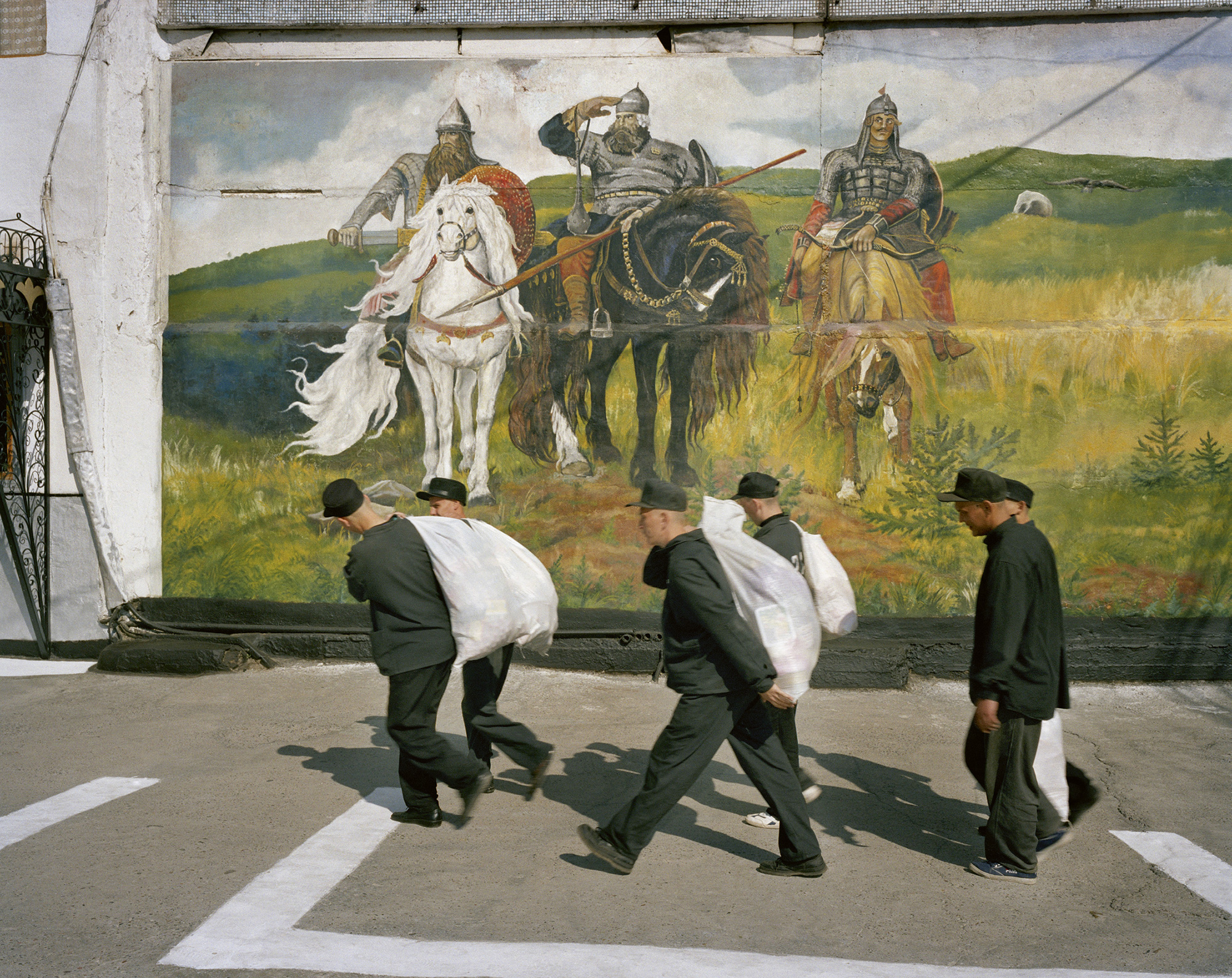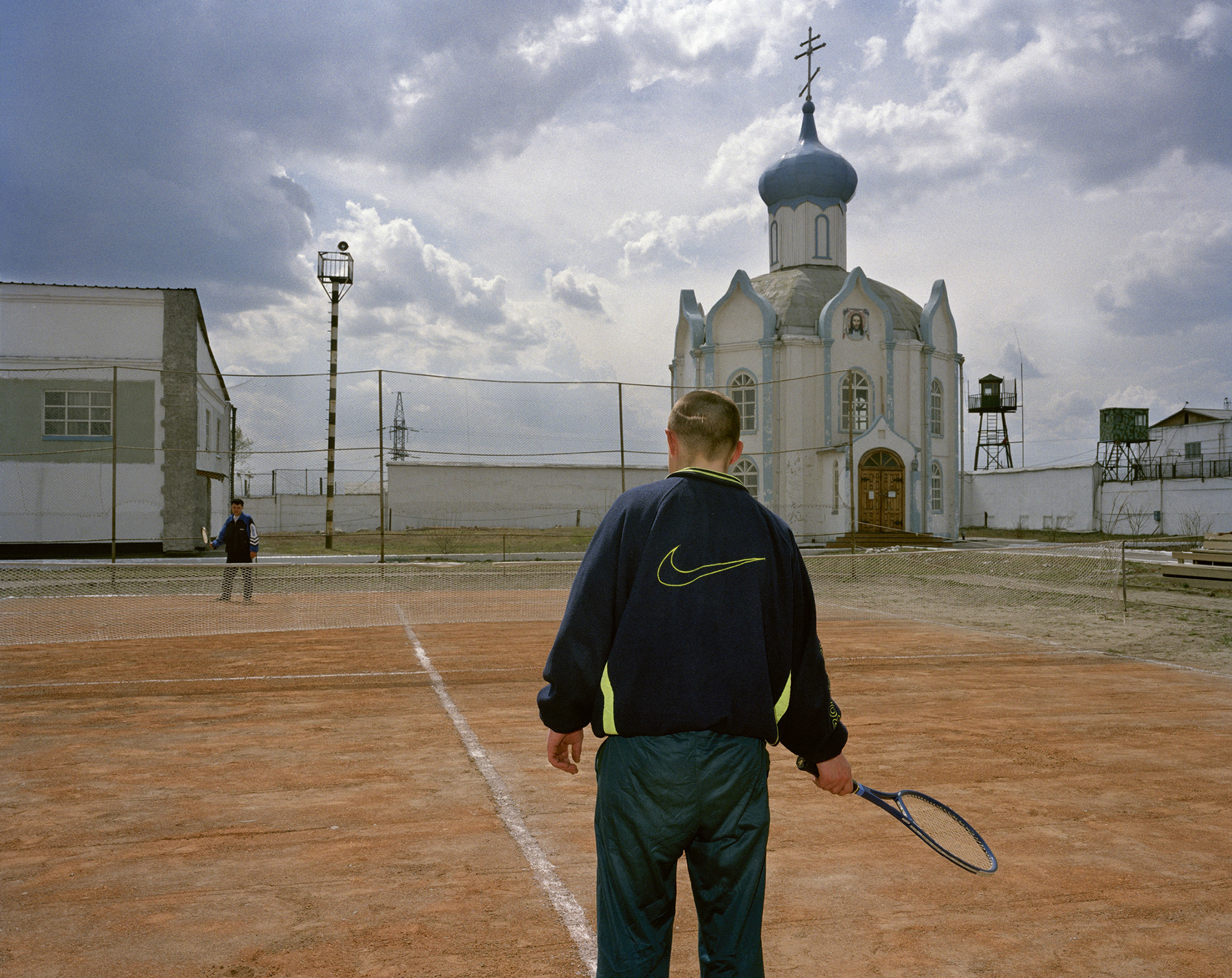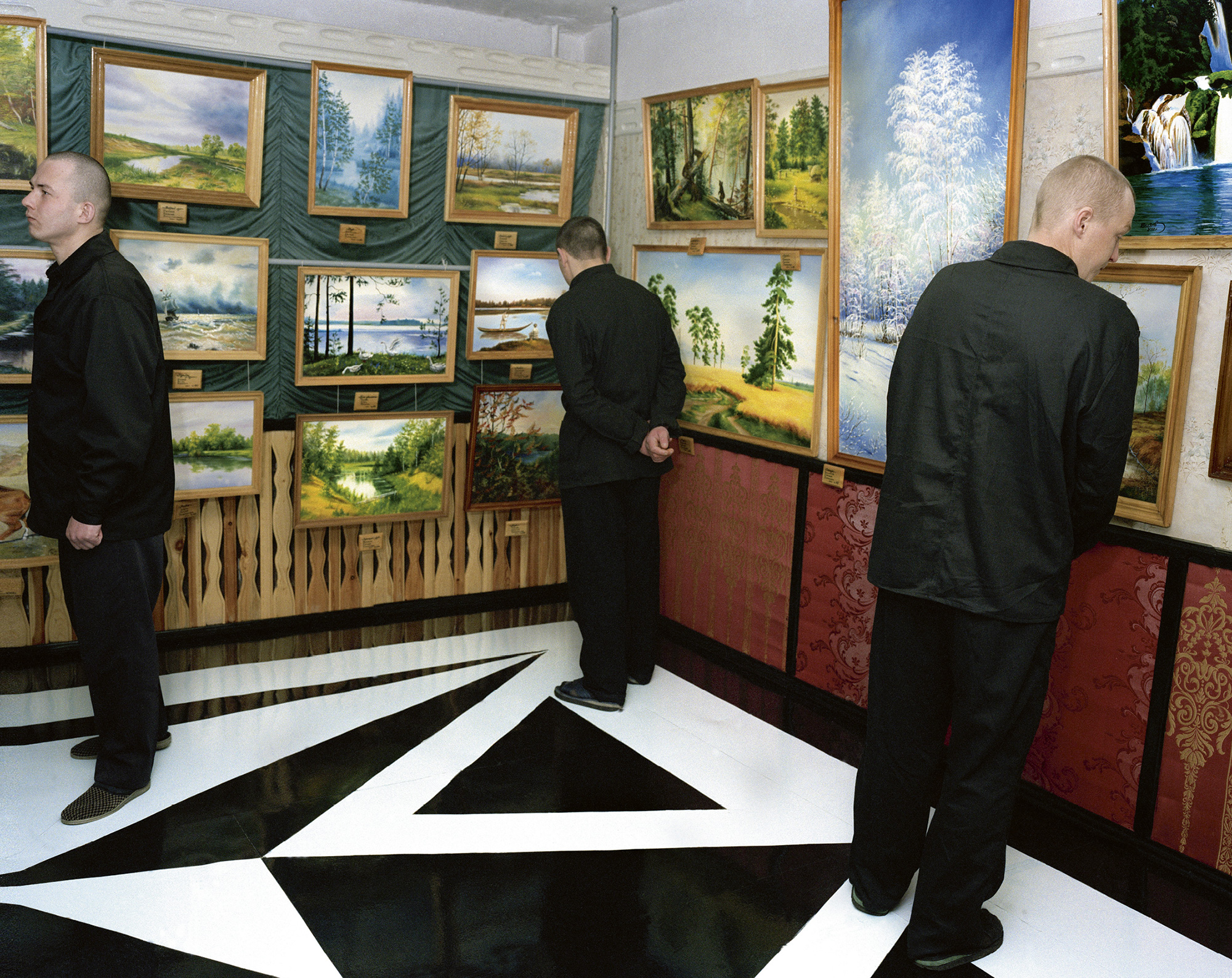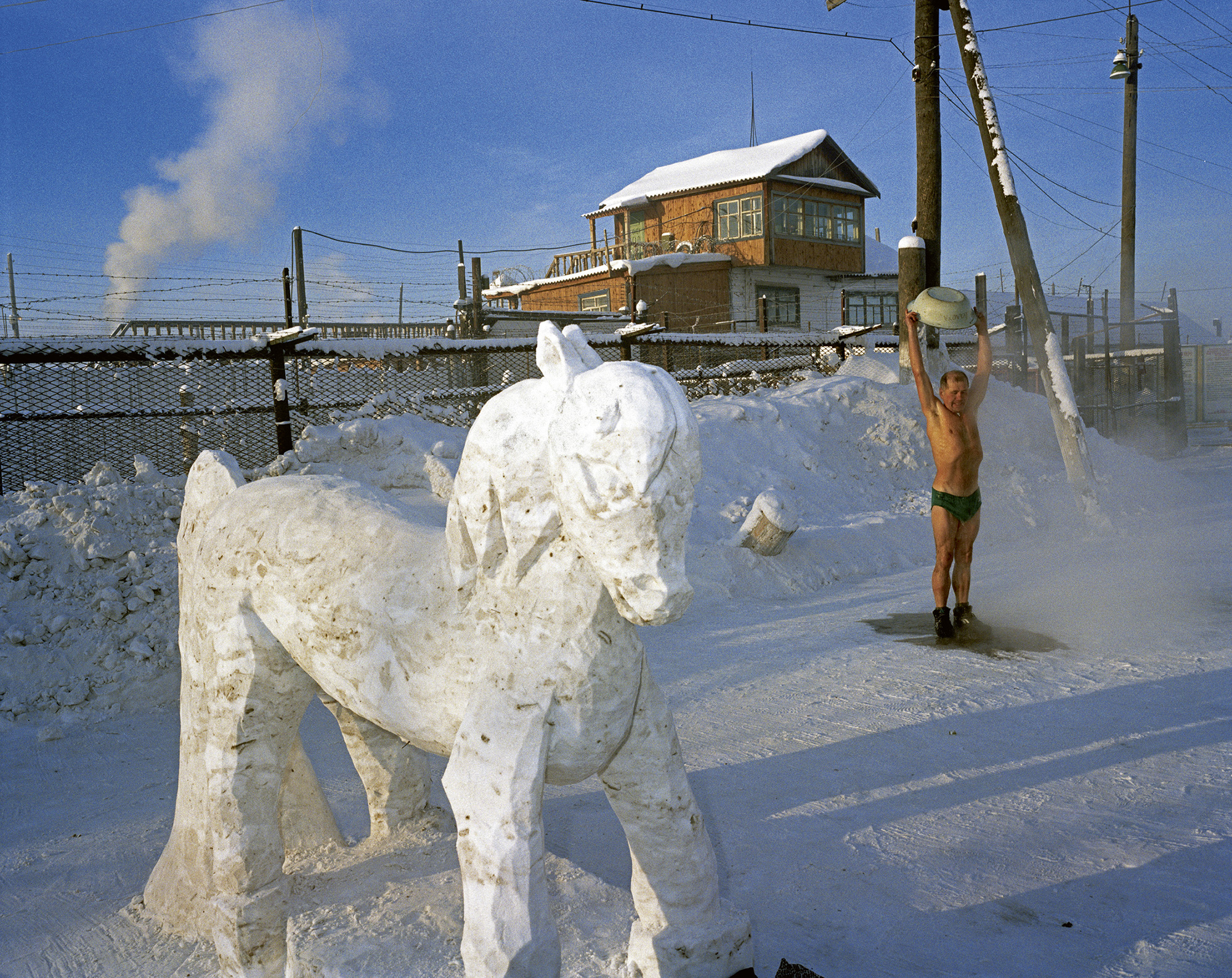Artist Project / Zona
Inside the gulag archipelago
Carl de Keyzer
Between 2000 and 2002, photographer Carl de Keyzer documented daily life in 35 of the more than 130 prison camps in the district of Krasnoyarsk Krai, Siberia. In a territory as large as some nations, prisoners live in a “country” of their own; they constitute a free labor force of one million men and women, held in the same camps, mostly built in the 1930s, that were famously described by Alexander Solzhenitsyn in his book The Gulag Archipelago. De Keyzer first visited the region to conduct a workshop with local photographers. Unfamiliar with the area, he asked the participants to choose a subject for the group to shoot; a local press photographer suggested they visit “a prison camp, a former gulag.” They ended up going to Camp 27, which de Keyzer later learned was a “model” camp that the authorities showed visiting dignitaries or foreign media. De Keyzer recalled his first impressions of the prison, which housed, like all the facilities, an average of 1,500 to 2,000 inmates:
I read Solzhenitsyn fifteen to twenty years ago, so I had a very grim idea of these camps. ... But the camp itself is sort of a Disneyland. You come into a gate decorated with metal soldiers made by the prisoners; there are huge murals, famous Russian paintings about glorious moments from the Middle Ages or even earlier, and at the entrance ... there’s a huge steam train on top of the gate; there’s a wooden windmill [as in] Don Quixote; there is a pyramid, Egyptian-style. ... Everything was in color, all the walls and interiors, mostly light blue, light green. Psychologically chosen colors, I guess, to put prisoners’ minds at rest.
When the workshop was finished, de Keyzer asked one of the local photographers if it was possible to see more camps. A few months later, he received word that the general in charge of the entire prison system of Krasnoyarsk had given permission for him to visit other locations. De Keyzer eventually documented three types of camps. The first group were urban, located in the larger cities in the region—primarily factory camps where prisoners manufactured furniture and repaired machinery, in addition to producing small artifacts like wooden bears—the symbol of Russia—or romantic paintings for sale to tourists in Moscow. The second group were remote, village-style camps. Because they are so far from the nearest city, these village camps often have relatively limited fencing and prisoners who are able to persuade their families to join them are allowed to live in separate houses. These facilities, de Keyzer recalled, “are real villages because there are other people living there, people who have started small businesses. There’s a school, there are children. The camp itself is quite open. The main [businesses there are lumber] and agriculture. There are some very big farms there; they raise cattle, pigs, chickens, and horses, like the old Soviet system. But the farms I saw—and these were the ones that had been selected for me to see—were in a terrible state. ... Ruined tractors everywhere, machines that didn’t work.” In the third type of camp—which de Keyzer described as looking “like some kind of cowboy fort, completely in the forest”—the photographer found conditions that were much harder than in the city camps.
The photographs on the following pages document prison life at three different camps in the Krasnoyarsk district.




Carl de Keyzer is a Magnum photographer based in Ghent, Belgium.
Spotted an error? Email us at corrections at cabinetmagazine dot org.
If you’ve enjoyed the free articles that we offer on our site, please consider subscribing to our nonprofit magazine. You get twelve online issues and unlimited access to all our archives.